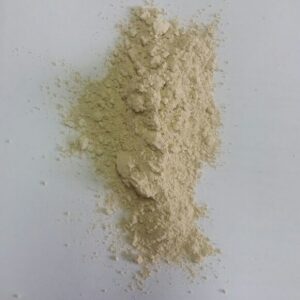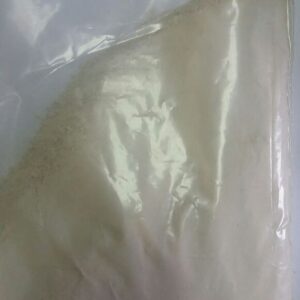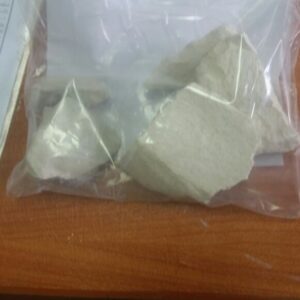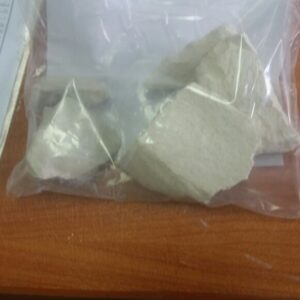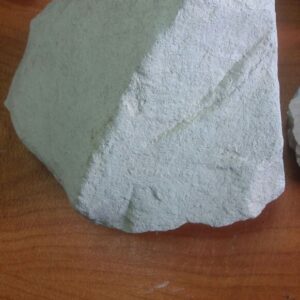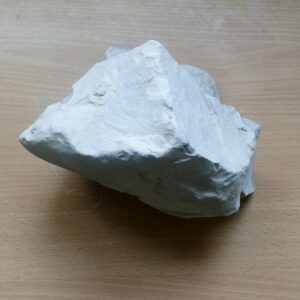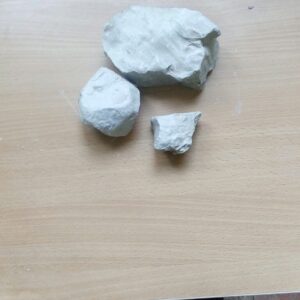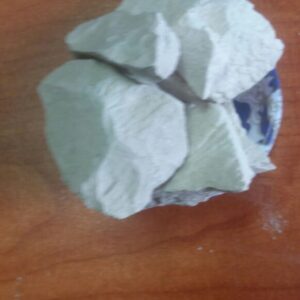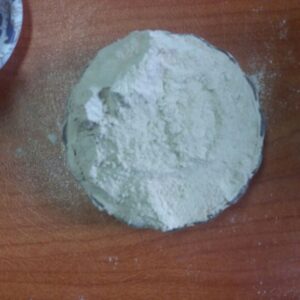KAOLIN (KAOLINITE)
Kaolin is a hydrated aluminum silicate (Al2O3·2SiO2·2H2O). It has a wide variety of industrial applications, due to its unique physical, physiochemical and chemical properties. These include paper coating and filling, refractory, fiberglass and insulation, rubber, paint, ceramics, and chemicals.
Clays are processed by mechanical methods, such as crushing, grinding, and screening, however, because clays are used in such a wide range of applications, it is often necessary to use other mechanical and chemical processes, such as drying, calcining, bleaching, blunging, and extruding to prepare the material for use.
Kaolin samples originally exhibit white color with high clay brightness, but it mainly contains various amounts, of discoloring elements, such as anatase (TiO2), mica and iron oxides (Fe2O3), which give low brightness and low quality. In addition, the anatase (titaniferrous) and mica can also contain iron contaminants [1]. The presence of such impurities is prohibitive to the production of optical fibers, glass, ceramics and refractory materials, so considerable efforts have been devoted to the problem of removing these contaminants by physical, chemical, or combination between them.
The primary step in kaolin processing is to separate the abrasive minerals like quartz and undesirable mineral such as mica. This is a simply process in case of a secondary deposit, but in contrast with the primary deposit as it is more difficult due to the presence of high proportion of the abrasive minerals that have survived the alteration process.
In order to improve the quality of kaolin clay for industry, the discoloring impurities must be removed from the samples by suitable techniques. However, these impurities are finer than the clay minerals, which, in turn, present difficulties in the separation processes. These separations generally include magnetic separation, froth flotation, selective flocculation, and size separation by hydro cyclone, and leaching .
For most industrial applications, kaolin should be processed to obtain refined clay so as to produce a remarkable product matches with the standard specifications. For example, kaolin used in paper and paint industries need to be of high brightness and low yellowness. Egyptian kaolin is not subjected to any beneficiation process and the Egyptian companies apply selective mining in some localities, followed by crushing and size reduction only. Such low quality kaolin can be used in refractory and pottery production but not in white ware and paper industries.
High gradient magnetic separation (HGMS) handles 75% of the world production of white porcelain and paper. A typical plant would have an HGMS with a filter diameter of about 2 m and capacity upto 20 t/hr .
Mostly kaolin used in the paper manufacturing industry where playing a dual role, as filler between the pulp fibers and as a surface coating for a white glossy finish. But natural kaolin has color as mined due to the iron containing micas, tourmaline, pyrite, anatase and rutile present in the material. To remove these impurities, kaolin can be magnetically cleaned with a continuous high gradient magnetic separator to produce highly white material suitable for paper or porcelain. A typical plant would have an HGMS with a filter diameter of about 2 m and capacity up to 20 t/hr.

